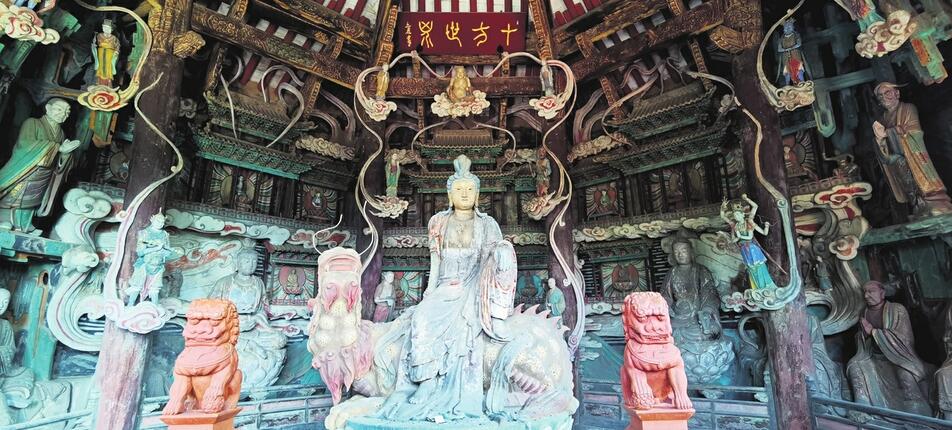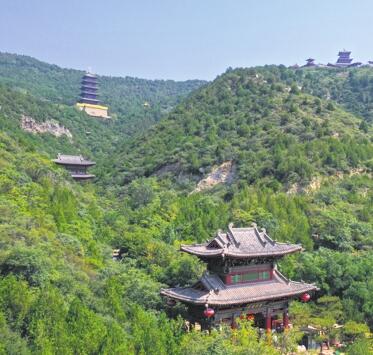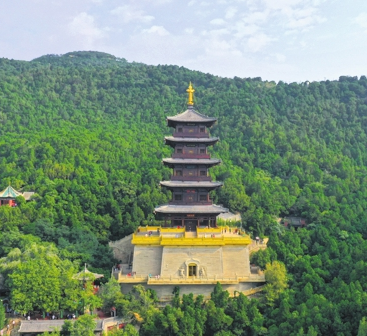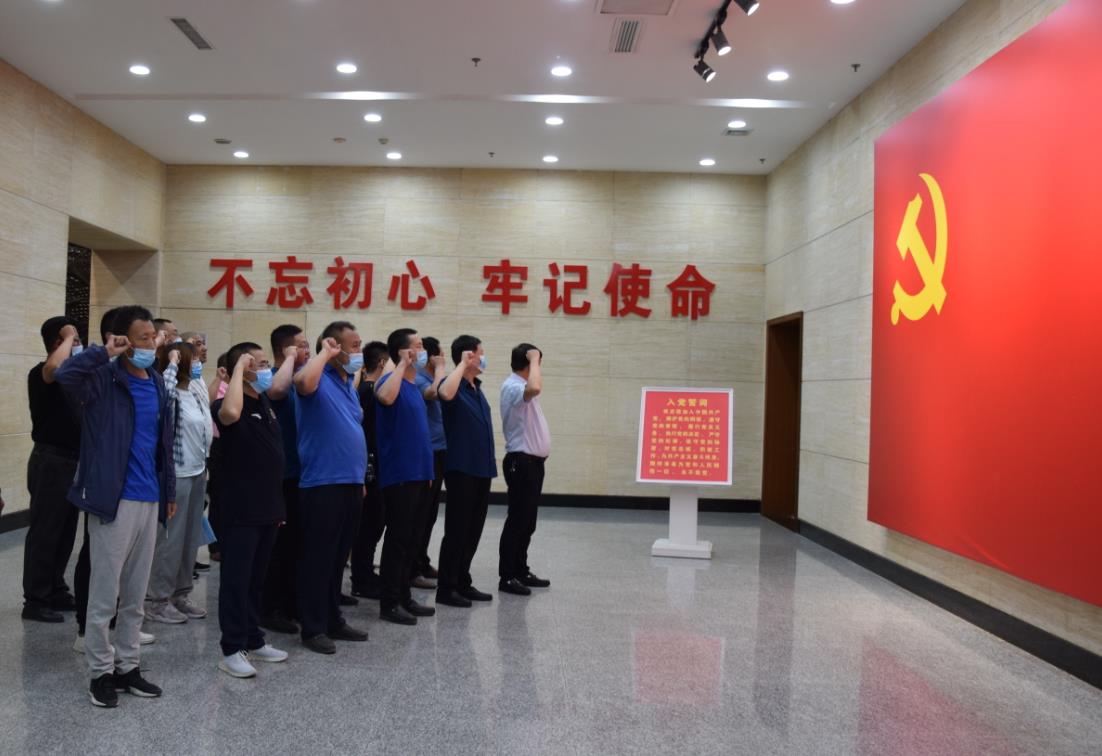
Ancient statues of Guanyin, the Buddhist Goddess of Mercy, at Longquan Temple in Taishan Scenic Area in Taiyuan, Shanxi province.

Taishan Scenic Area is a popular tourist attraction of Taiyuan.

Inside the seven-story pagoda are pieces of Sarira, which are crystal-like bead-shaped objects, that were found among the cremated ashes of Buddhist spiritual masters.
When summer was about to retreat at the end of August, Taiyuan, capital of North China's Shanxi province, maintained a temperature of more than 30 C during the daytime.
Taishan Scenic Area in the western suburbs of the city recently became a hot spot for tourists from both Taiyuan and the rest of the country. With a higher altitude and with most of its land shaded by dense forest, the temperature is several degrees lower than its surrounding area.
According to the administrative committee of the scenic area, Taishan welcomed more than 100,000 visits in August, despite preventive measures over the COVID-19 pandemic.
However, not all the tourists came there for an escape from the summer heat. For tourists who are interested in history and culture, especially students, Taishan is an ideal destination for exploration.
Longquan Buddhist Temple at the core of the area is a must-see site in Taishan. With a history of more than 1,000 years and many centuries-old structures kept intact, the temple was included on a list of the nation's protected cultural heritage sites.
Yang Jinjin, a tour guide, was leading a group of mostly primary and middle-school students to the entrance of Longquan Temple on the morning of Aug 24. Wearing a Tang Dynasty (618-907) style garment, she said: "Dressing up is a show of respect to the ancient culture of the temple, which is said to be built in the seventh or eighth century during the Tang Dynasty, and also a way to make me easy to recognize in the crowd."
On the path toward the temple's main hall, which is accompanied by a meandering brook and shaded by lush trees, the students were excited by the wooden plaques under the trees, which were inscribed with familiar Tang Dynasty poems.
A 10-minute walk led them to the central gate of the temple where they found a huge stone tablet. The stone tablet was circled by a cordon, which, according to Yang, meant visitors are not allowed to cross for the protection of the ancient relics.
However, there were three men inside the line. "They are archaeologists conducting research on the tablet," Yang said.
Inscriptions on the tablet show that it was created in 711, she said, noting that this 6-meter-high monument is among the nation's three most renowned preserved stone tablets built in the Tang Dynasty.
"As the inscriptions on the exposed part of the tablet cannot be easily recognized due to centuries of erosion by wind and rain, researchers are trying to reveal the inscriptions buried by the soil, which are better preserved," Yang said.
The tour guide told tourists that the inscriptions are a record of famed Tang Dynasty empress Wu Zetian making a visit to her hometown in Taiyuan."Research into the now unearthed inscriptions will bring to light more details of local history during the period of Wu's rule, who reigned over the country between 690-705," Yang said.
Yang took the tourists to a nearby seven-story pagoda, saying that she wanted to show them another important archaeological discovery.
Inside, the tourists saw five boxes made of different materials: stone, wood, copper, silver and gold.
Yang said the boxes were found in May 2008, when local workers were repairing the interior of the pagoda.
Their first discovery was the 58-centimeter-long stone box, then the smaller wood, copper, silver and gold boxes inside, arranged in the style of Russian dolls.
Inside the gold box were 23 pieces of Sarira. Sarira refers to the crystal-like bead-shaped objects that were found among the cremated ashes of Buddhist spiritual masters. Sarira, especially those from the Buddha, or Sakyamuni, is an object of the highest respect from Buddhists.
"I watched the live broadcast of the excavation 12 years ago. And now I can finally have a close look at the excavated objects," said a member of the tourist group surnamed Guo, who was from Yangquan city of Shanxi province.
However, Zhao Jing, an official at the administrative committee of Taishan Scenic Area, revealed the exhibits were replicas.
"The original relics will go back to Longquan Temple within a month and we're planning to exhibit them in the near future," Zhao said.
By YUAN SHENGGAO
Li Yali contributed to this story.
 山西路桥:党建引领 建好“四好农村路”山西路桥建设集团党委扎实开展“党建质量提升年”,实施“六大工程”,立足“十四五”高质量、高速度、高效益发展的战略基点,全面提高党建质量和党建引领发展水平,为打造“国内一流的交通基础设施投资、建设、施工现代化企业集团”提供坚强政治保障。
山西路桥:党建引领 建好“四好农村路”山西路桥建设集团党委扎实开展“党建质量提升年”,实施“六大工程”,立足“十四五”高质量、高速度、高效益发展的战略基点,全面提高党建质量和党建引领发展水平,为打造“国内一流的交通基础设施投资、建设、施工现代化企业集团”提供坚强政治保障。
 常住人口3491万 山西人口普查数据"出炉"山西省统计局向社会通报山西省第七次全国人口普查主要数据。数据显示,山西省常住人口为34915616人,比2010年(第六次全国人口普查数据,下同)减少2.23%,年平均减少0.23%。山西省常住人口总量减少,主要受人口流动变化等因素影响。
常住人口3491万 山西人口普查数据"出炉"山西省统计局向社会通报山西省第七次全国人口普查主要数据。数据显示,山西省常住人口为34915616人,比2010年(第六次全国人口普查数据,下同)减少2.23%,年平均减少0.23%。山西省常住人口总量减少,主要受人口流动变化等因素影响。